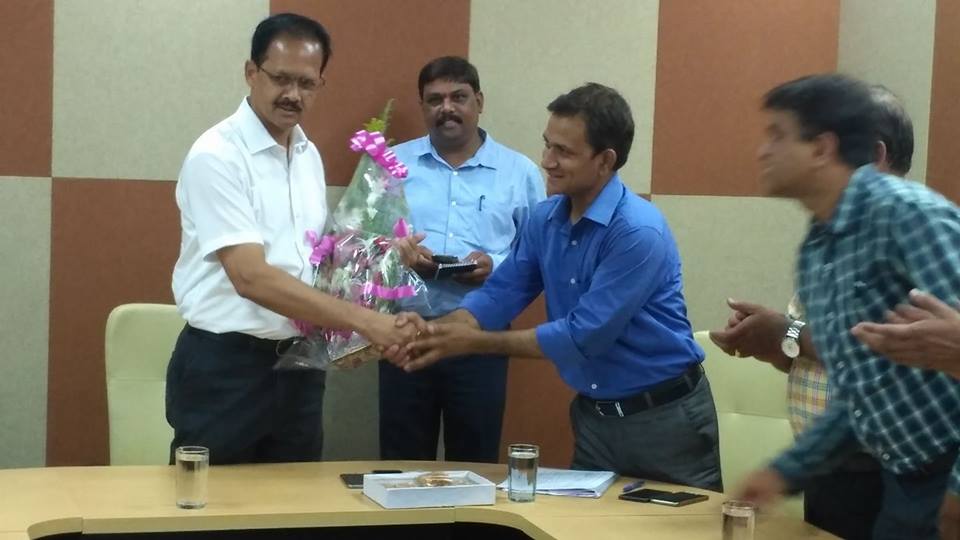Frequently Asked Questions (FAQs) under Smart Cities Mission Some of the frequently asked questions by the States/ Cities and clarifications by MoUD are outlined below:
Q 1 – It is difficult to implement water and sewerage projects specific to areas as the large infrastructure needed are generally created for the entire city. How to address this?
Answer – Typically, water and sewerage system are sub-divided into smaller geographical areas (e.g. zones). While selecting areas, it would be prudent to keep the smaller geographical units in view.
Q 2 – Will the Centre provide separate funding for the preparation of Smart City Proposal in addition to the Rs. 2 crores sanctioned as A&OE charges?
Answer – Rupees Two Crore released for each shortlisted city is to take care of A&OE expenses, including the preparation of Smart City Proposal (SCP). However, separate funding will be provided from the World Bank assisted CBUD Project for meeting the cost for payment to Consulting Firms.
Q 3 – As the Mission lays focus on convergence of various parallel programmes, what efforts are being taken by MoUD to ensure convergence at policy level between various ministries at GOI level?
Answer – MoUD will coordinate such convergence at the National level.
Q 4 – While planning for making our cities Smart, one should also address the resilience aspects. Whether the mission guidelines cover the resilience aspect adequately?
Answer – Resilience is an important aspect while making SCP and has been emphasized in the mission guidelines and is one of the criteria to evaluate the SCP (Annexure 4, criteria 5.c, page 35).
Q 5 – What are the institutional structures (PMUs) to be established for the implementation of Smart Cites Mission?
Answer – Comprehensive Capacity Building Programme (CCBP) has been re-aligned with AMRUT and Smart Cities Mission, under which adequate human resources on ground will be placed (State & City MMUs) to provide human resources to provide technical support to States/ ULBs.
Q 6 – What are the best practices available in the areas of renewable and sustainable energy efficient models?
Answer – The consulting firms should be tasked to list out all such best practices during preparation of SCP.
Q 7 – Whether a financial intermediary at central level is being created to cater to the funding needs of various cities for the implementation of smart city projects?
Answer – Only a financial intermediary at the state level is proposed.
Q 8 – What are the roles of handholding agencies under the Mission?
Answer – The handholding agencies (multi-lateral and bi-lateral) will provide technical assistance to Cities/States in preparing Smart City proposals. They will also act as knowledge patners.
Q 9 – What will be the boundary of the Smart City?
Answer – For Retrofitting and Redevelopment options, statutory limits of ULB will be the boundary and for Greenfield development, it can be beyond the city limits, but within the notified planning area of the City.
Q 10 – The minimum area requirement for the Redevelopment model is 50 acres, which seems not feasible in case of cities in North Eastern and hilly states. Whether the requirement of minimum area is flexible and can be reduced for such areas?
Answer – In terms of Para 5.3 of the SCM guidelines, for North Eastern and Himalayan States, the area proposed to be developed will be one-half of what is prescribed for any of the alternative models.
Q 11 – For each city, GoI will provide Rs.500 crore and States will contribute its matching share of Rs.500 crore. This Rs.1000 crore will surely be not adequate for development of a city as smart city under SCM. How the convergence with other schemes be ensured for Smart Cities Mission?
Answer – While preparing SCP, cities must make convergence of SCM with other Government Schemes. For example, core infrastructure projects for entire city could be taken up under AMRUT, SBM and HRIDAY and then area selected for development as smart city could be taken up and smart solutions could be applied under SCM. Further, apart from the convergence with other schemes, there are a lot of other sources been identified for financing the SCM which can be seen in para 11.3 of the SCM guidelines.
Q 12 – When will the final Smart City Proposal format be sent to the States by MoUD? What is the last date for submitting the Smart City Proposals to MoUD?
Answer – Final SCP format is available in OM No.K-15016/61/2015-SC-I, dated 14-09- 2015. The timeline for submitting the SCP to MoUD is 15th December 2015. For timeline of other activities/sub-activities, please see OM No.K- 14012/101(28)/2015-SC-IIIA, dated 23-09-2015.
Q 13 – What are the various institutional arrangements which the cities should plan for under the Smart Cities Mission, like SPV, etc.?
Answer – The SPVs may be formed after the selection of 20 cities in stage 2 of the challenge.
Q 14 – How MoUD will support States/cities clarify their queries during the smart city proposal preparation process?
Answer – MoUD is in the process of setting-up a Toll Free Number for all queries and clarifications. However, the States/ Cities at any point of time, feel free to contact/approach National Mission Directorate for any clarification.
Q 15 – There is overlapping between AMRUT and SCM. Activities which are eligible for financing under AMRUT are also in SCM which is creating confusion. Clarification needed on this?
Answer – AMRUT and SCM are complimentary to each other. Cities may take up the core infrastructure for the full city under AMRUT and choose areas for development under the Smart City Mission. In due course, the City can replicate the area based development to other areas of the City.
Q 16 – What are the resource pool available for the cities to acquaint with the best practices/ smart solutions?
Answer – The Consulting Firms should prepare an exhaustive list.
Q 17 – Weather regional language option available in the ICT, citizen engagement tool developed by MyGov?
Answer – MyGov is a Unicode enabled site. It allows people to submit their views/ documents in any language. But, under the present set-up, the analysis of the data received can be done only in English and Hindi. Efforts are being made by MyGov to build-up the team for other languages as well in due course of time. Cities and States can also provide help in this regard through the local support.
Q 18 – As per SCM guidelines, minimum of 10% of energy requirement should be sourced from the renewable energy sources. This needs regulation at State levels. Whether the central government will facilitate the states to bring in these regulations?
Answer – The HPSC is expected to handle such coordinating issues.
Q 19 – Whether the retrofitting/ redevelopment/ greenfield development should be taken up for a contiguous areas as stipulated in the guidelines?
Answer – Yes.
Q 20 – Is there any specific yardstick (such as number of people consulted) prescribed for citizen engagement?
Answer – Please see OM No.K-14012/101(28)/2015-SC-IIIA, dated 23-09-2015.
Q 21 – What are the procedures for selection of private partner and implementation of SPV?
Answer – The selection of the private partners for the remaining share will have to be decided by State/ ULB in a transparent and fair manner.
Q 22 – Can we propose tariff structuring for water supply and sewerage as part of SCP?
Answer – The SCM and AMRUT are complementary. Regarding tariff structuring, AMRUT Reforms given in Annexure-I of the AMRUT Mission Guidelines may be used for guidance.









